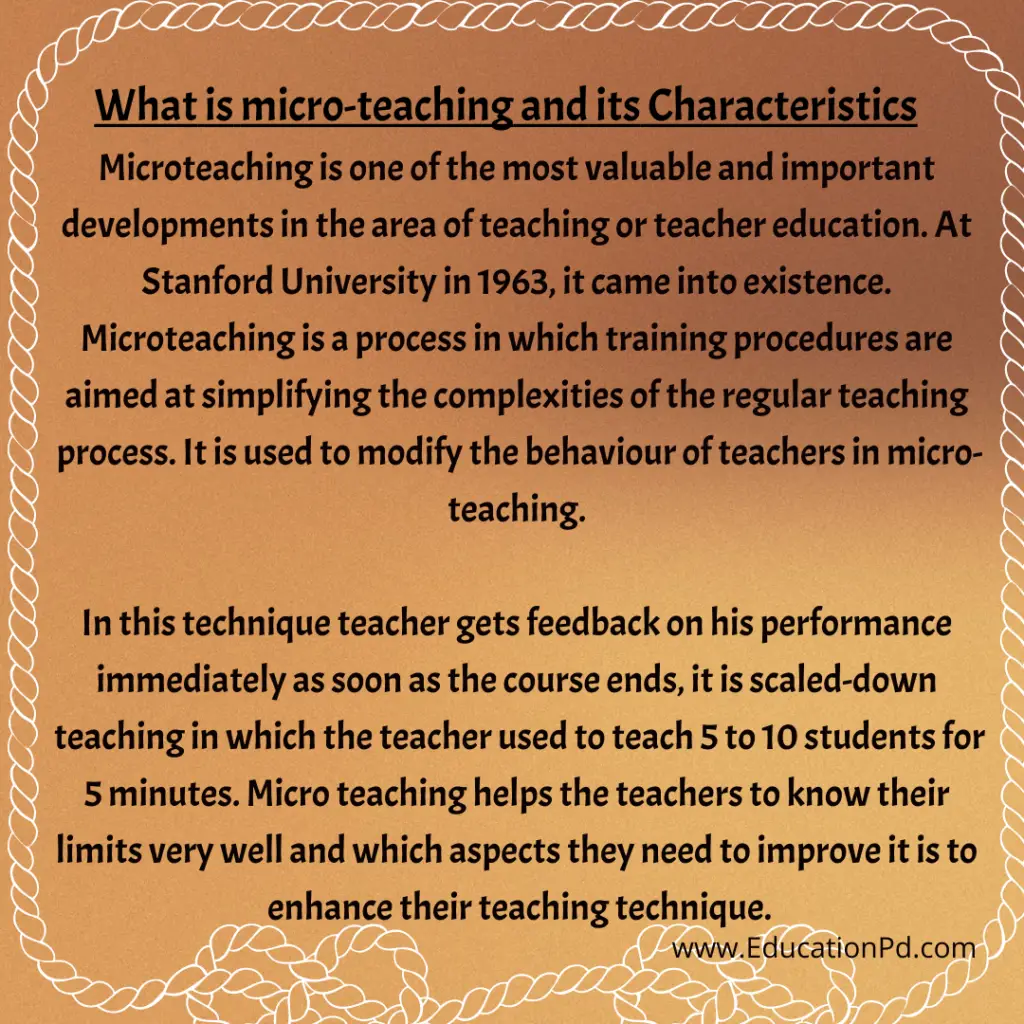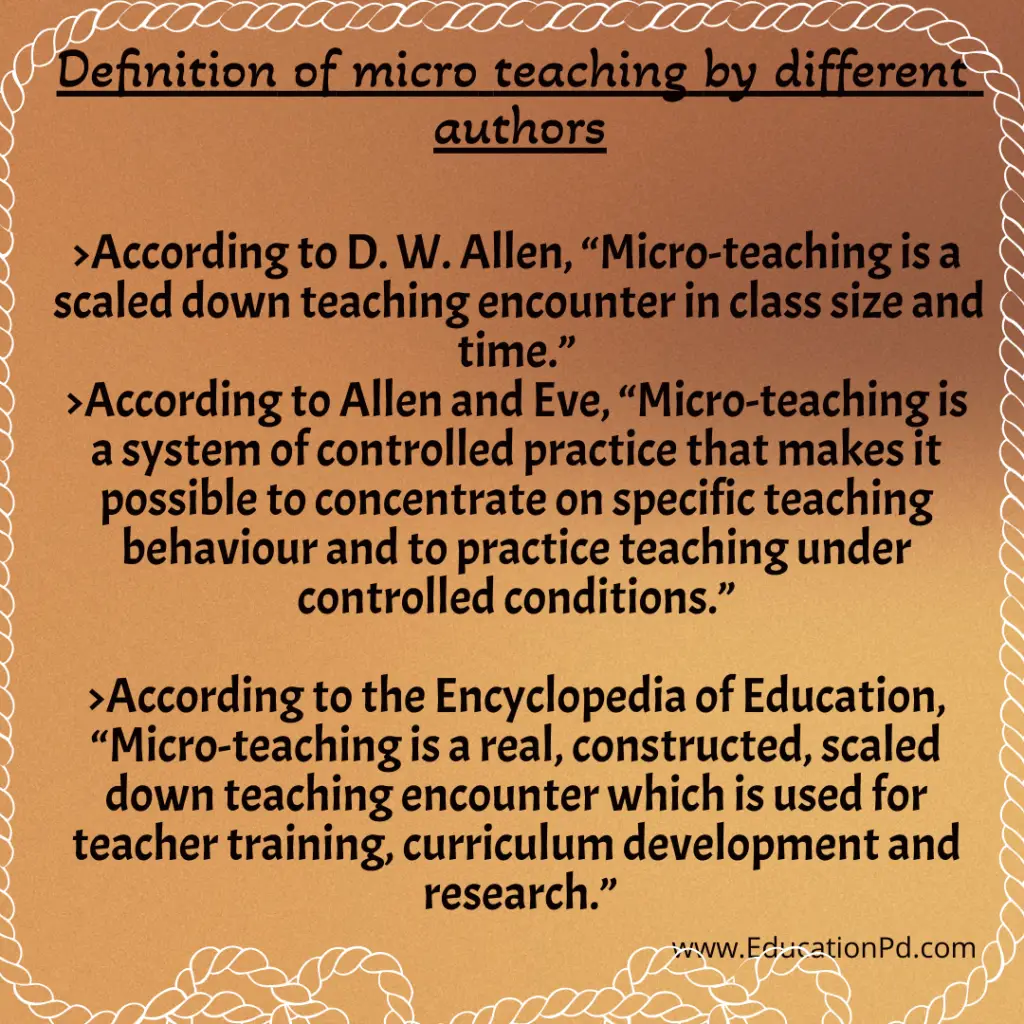Back to: Educational Technology in Education B.ed Notes, M.A Notes, IGNOU Notes
What is micro-teaching and its Characteristics
Microteaching is one of the most valuable and important developments in the area of teaching or teacher education. At Stanford University in 1963, it came into existence. Microteaching is a process in which training procedures are aimed at simplifying the complexities of the regular teaching process. It is used to modify the behaviour of teachers in micro-teaching.
In this technique teacher gets feedback on his performance immediately as soon as the course ends, it is scaled-down teaching in which the teacher used to teach 5 to 10 students for 5 minutes. Micro teaching helps the teachers to know their limits very well and which aspects they need to improve it is to enhance their teaching technique.
Its purpose is to provide teachers with the opportunity for the safe practice of an enlarged cluster of teaching skills while learning how to develop simple, single-concept lessons in any teaching subject. It helps the teachers to improve both content and methods of teaching.

Definition of micro teaching by different authors
- According to D. W. Allen, “Micro-teaching is a scaled down teaching encounter in class size and time.”
- According to Allen and Eve, “Micro-teaching is a system of controlled practice that makes it possible to concentrate on specific teaching behaviour and to practice teaching under controlled conditions.”
- According to the Encyclopedia of Education, “Micro-teaching is a real, constructed, scaled down teaching encounter which is used for teacher training, curriculum development and research.”

Characteristics, Nature or Features of micro-teaching skills
- It is a training technique, not a teaching technique.
- It is relatively a new experiment or innovation in the field of teacher education more specifically in student teaching.
- It imposes a high degree of control in practicing a particular skill.
- It is minimizing and scaled down teaching.
- It gives the required information to the trainee about his performance.
- It can be practiced in highly controlled situations.
- It provides an opportunity to select one skill at a time.
